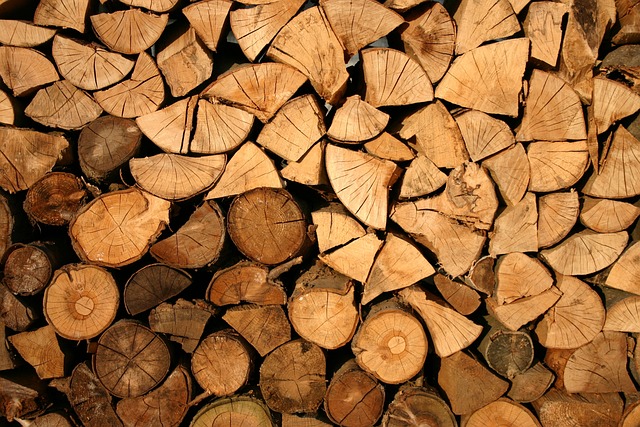Lane County, Oregon's timber industry has evolved significantly, transitioning from traditional logging to modern, sustainable forest management practices. Driven by environmental awareness and technological advancements, the county balances resource extraction with ecological preservation, addressing climate change impacts and global timber demand. Key strategies include precise cutting technologies, data-driven decision making, selective logging, reforestation, and habitat conservation. These efforts aim to ensure long-term forest health, productivity, and economic viability while promoting diverse land uses like ecotourism, fostering a resilient and sustainable timber industry centered around effective forest management in Lane County.
Lane County, Oregon, once a powerhouse in the timber industry, is navigating a crucial balancing act. This historical hub of forest management practices faces evolving challenges, from environmental conservation efforts to the rapid modernization of harvesting technologies. The article delves into the county’s past, present struggles, and future prospects, exploring sustainable strategies that harmonize economic viability with ecological preservation in Lane County’s ever-changing timber landscape.
- Historical Overview of Lane County's Timber Industry
- Challenges and Pressures on Traditional Forest Management Practices
- Modernization Efforts: Embracing New Technologies in Timber Harvesting
- Sustainable Forest Management Strategies for Lane County
- The Future of Lane County Oregon's Timber Industry: A Balancing Act Between Environmental Conservation and Economic Viability
Historical Overview of Lane County's Timber Industry

Lane County, Oregon, has a rich history tied to its timber industry, which for decades shaped the economic and cultural landscape of the region. The vast forests of Douglas fir, ponderosa pine, and hemlock have long been a cornerstone of the local economy, supporting a thriving logging and milling sector. Historically, small-scale logging operations began in the mid-19th century, followed by the establishment of larger mills in the early 20th century, which transformed Lane County into a significant timber producer.
The industry’s growth was fueled by the demand for lumber during World War II, leading to extensive forest harvesting and rapid urbanization. However, as time progressed, environmental concerns and the need for sustainable forest management gained prominence. This shift marked a turning point, pushing the industry towards modernization and embracing practices that balance ecological preservation with economic viability, reflecting the evolving landscape of forest management in Lane County.
Challenges and Pressures on Traditional Forest Management Practices

The traditional forest management practices in Lane County, Oregon, have faced significant challenges and pressures in recent times. The region’s timber industry, once a cornerstone of the local economy, is now navigating a shift towards more sustainable and modern approaches. One of the primary hurdles is balancing the need for resource extraction with environmental conservation. As the demand for timber products increases globally, Lane County’s forests face intensifying pressure to meet these demands while ensuring ecological health.
Additionally, changing climate patterns have introduced new variables into forest management. More frequent and severe weather events, such as wildfires and storms, threaten the stability of these ecosystems. These challenges necessitate innovative strategies in forest management, pushing traditional practices to evolve. Adaptability is crucial for the future of Lane County’s timber industry, requiring a blend of scientific understanding, technological advancements, and community engagement to meet the demands of both environmental stewardship and economic viability.
Modernization Efforts: Embracing New Technologies in Timber Harvesting

In recent years, Lane County Oregon’s timber industry has witnessed a significant shift towards modernization, driven by advancements in technology and evolving forest management practices. This transformation is reshaping how timber harvesting is conducted, increasing efficiency while prioritizing sustainability. New technologies, such as drone surveillance and precision cutting equipment, are being embraced to optimize resource extraction without compromising the health of the region’s forests.
Modernization efforts extend beyond just the harvest process; they encompass comprehensive forest management strategies. These innovations allow for more accurate data collection on tree growth, species distribution, and overall ecosystem dynamics. Armed with these insights, local forestry professionals can make informed decisions about when and where to harvest, ensuring a balanced approach that supports both economic viability and environmental stewardship.
Sustainable Forest Management Strategies for Lane County

Lane County, Oregon, has embraced modern strategies in the timber industry, focusing on sustainable forest management. This approach ensures the long-term health and productivity of the region’s forests while catering to the demand for timber resources. By implementing practices such as selective logging, reforestation, and habitat conservation, Lane County aims to maintain ecological balance and support a vibrant ecosystem.
These strategies involve carefully planning and executing harvest activities to minimize disturbance and promote forest regeneration. Reforestation efforts include planting native tree species, enhancing soil stability, and improving water quality. Additionally, the county promotes diverse land uses, including ecotourism and wildlife habitats, contributing to a more resilient and economically viable timber industry in the region.
The Future of Lane County Oregon's Timber Industry: A Balancing Act Between Environmental Conservation and Economic Viability

